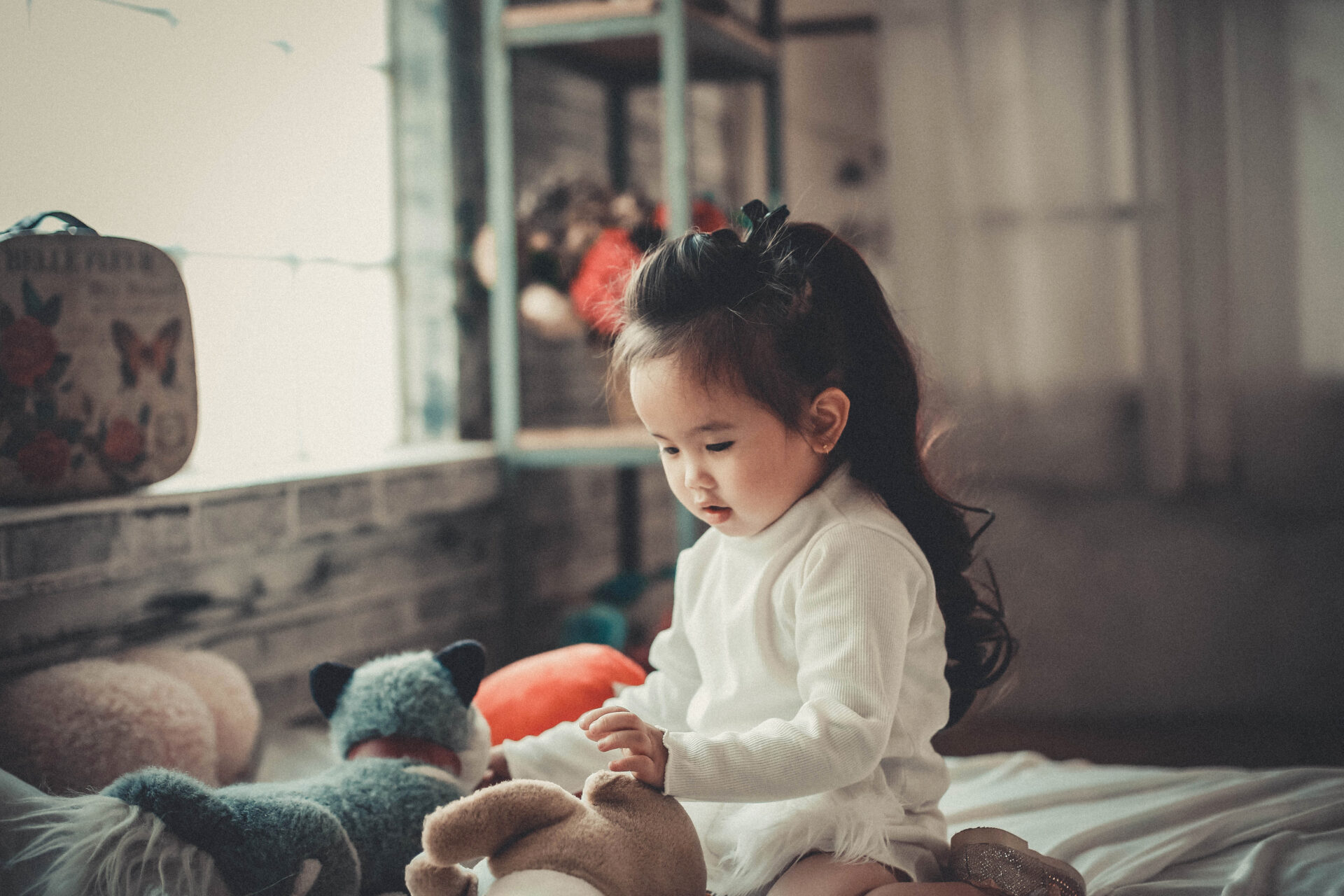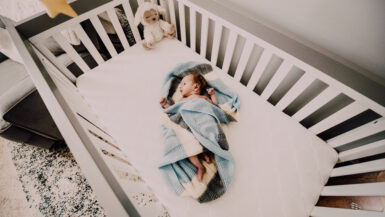Creating a stimulating environment for your baby can be a daunting task. As your baby grows, you may feel overwhelmed by the endless choices. From choosing the right toys and play materials to appropriate décor, there is much to consider. But with some thoughtful planning and creative ideas, you can create a nurturing environment for your infant that is both stimulating and safe. This article will provide practical tips for how to create a stimulating environment for your baby and how to maximize the learning opportunities that come from it.
Setting up the Room
Creating a stimulating environment for your baby is essential for its healthy development. The room in which your baby spends the majority of its time plays an essential role in this. As parents, it’s important to equip the nursery with the necessary items to ensure it’s a cozy, safe and stimulating place for your baby.
Ensuring Comfort and Safety
When setting up the room, it’s best to start with the main items like the crib, changing table and a rocking chair. Ensure that the crib is safe and comfortable for your little one, with a firm and supportive mattress. Place the crib away from windows, crammed corners and electrical outlets. Check the changing table for stability and make sure that your baby is secure while getting diaper changes. Adding a rocking chair allows you to comfortably rock your baby to sleep or feed them.
Choosing The Right Decor
You can make the room stimulating for your baby by adding the right decorations and wall art. Choose bright and colorful wall hangings, baby mobiles, and other decorations that can draw your baby’s attention. Avoid any furniture or decorations that are too sharp or hard for the baby’s delicate skin. Choose floor coverings that feel soft, like a carpet or area rug.
Installing Baby-Friendly Lighting
The lighting in the room should create an inviting atmosphere that’s conducive to sleep. Choose dimming light fixtures, as they can be adjusted to create the perfect light conditions. Install blackout curtains so your baby can enjoy comfortable naps even during the day.
Adding Toys and Books
To make the room extra stimulating, add soft toys, rattles, and books. Babies respond to different shapes, sizes, and textures – so choose baby-friendly toys and objects that will capture their attention. Make sure that the toys are age-appropriate.
Creating a safe and stimulating room for your baby is an important part of their early development. Putting in the effort to make the nursery a cozy and comfortable environment for your little one will help give your baby the best start in life.
Safety Matters
Creating a stimulating and positive environment for your baby is very important in their physical, emotional, and cognitive development. This can be done by providing plenty of playtime and activities, as well as fostering secure attachments with caregivers. Additionally, safety should always be considered when creating an environment for your baby.
Physical Safety
Ensuring that the home environment is physically safe and secure should be your first priority when designing a stimulating environment for your baby. There should be baby proofing involved, such as covering any electrical outlets, lock up any hazardous items, and place any heavy furniture out of reach. Make sure to secure furniture or other items that could potentially fall over if pulled. Additionally, have easily accessible first-aid supplies in case any accidents or injuries occur.
Emotional and Social Safety
Creating a secure and stable emotional environment for your baby is just as important as creating a physically safe environment. Make sure to provide plenty of positive reinforcement and support for your baby. Spend time and be present during feedings, playing, and cuddling. This will help to foster strong attachments and secure emotional relationships between parents and their baby.
Cognitive Stimulation
Cognitive stimulation is key in developing your baby’s learning and problem-solving skills. Stimulating activities such as singing, reading stories, and playing games can help in this. Additionally, providing sensory stimulation such as toys with different colors, textures, and shapes will encourage the development of physical and cognitive skills. Utilizing bright colors in a well-lit room can also help to keep your baby alert and engaged.
Provide a Safe and Stimulating Environment
Creating a stimulating environment for your baby is essential in their physical, emotional, and cognitive development. However, it is important to always keep safety in mind when designing the environment for your baby. Make sure to take the necessary steps to ensure physical safety, foster secure attachments, and provide emotional and cognitive stimulation. With these tips, you can provide your baby with an ideal home environment that is both safe and stimulating.
Stimulating Visuals
Creating visual stimuli for your baby is an important part of helping them explore the world around them. You can do this by providing them with stimulating visuals that encourage exploration of their environment. Here are some simple ways you can create a stimulating visual environment for your baby:
Introducing New Colors and Shapes
Introduce your baby to new colors and shapes. Not only can this help stimulate their visual senses, but it can also help with learning shapes, colors, and patterns. Try hanging brightly colored pieces of fabric, painting a wall with a fun pattern, or placing colorful objects in your child’s bedroom or play area.
Encouraging Exploration
Provide your baby with age-appropriate toys and objects that encourage exploration. Stuffed animals, blocks, stuffed rattles, and sensory balls are all great for stimulating their visual senses. Place the toys or objects within view or have them strategically placed around to grab their attention.
Displaying Appropriate Graphics
Display graphics such as posters and pictures of animals, nature, or people around your home that your baby can look at. You can also hang artwork created by older siblings or family members to help stimulate your baby’s visual senses.
Encouraging Natural Exploration
Encourage your little one to explore the great outdoors and observe the natural world around them. Take them for a walk in the park or anywhere that is safe and provides lots of visual stimulation. Talk about the different colors of the sky or the shapes of the trees.
Reading Books
Reading books is a great way to provide your baby with visual stimulation. Choose books with a variety of illustrations and graphics that are age-appropriate and that your baby can relate to. This is also a great way to help them learn about objects, colors, and shapes by looking at pictures.
By providing your baby with stimulating visuals, you can help them understand the world around them, develop new skills, and reach their milestones. Just remember to make sure the visuals you create are appropriate for their age and stage of development.
Tactile Stimulation
Creating a stimulating environment for babies includes providing them with tactile stimulation. This sensory experience helps develop a baby’s neural pathways and encourages brain growth. Tactile stimulation can help a baby learn about the world around them by exploring it through touch.
Tactile stimulation items such as textured objects, rattles, or soft toys will help babies understand different objects and how they feel in their hands. This type of stimulating activity stimulates curiosity and allows the baby to experiment and use their hands. It also develops hand-eye coordination and fine motor skills.
The Benefits of Massage
Babies also benefit greatly from massage, a type of tactile stimulation. Massage can help babies relax and can be used to soothe them when they are feeling anxious or overwhelmed. Massage helps a baby to relax and feel secure, increasing the bond between parent and baby.
Some studies have found massage can even have long-term benefits for babies such as improved sleep, better weight gain, and healthier digestion. Additionally, massage can help to regulate a baby’s nervous system and release tension in their body.
Encouraging Playtime with Textures
Textured toys such as blocks and balls are important for tactile stimulation for babies. They can help to improve hand-eye coordination, depth perception, and problem-solving abilities. They also encourage exploration, as babies learn to reach for, move and grasp different objects.
Parents can also encourage exploration through tactile stimulation by introducing different textures and materials that can be touched, such as soft blankets, fabrics or sponges. This helps babies to understand how different materials feel and what they are like to the touch.
Creating a Stimulating Environment
Providing tactile stimulation to your baby is a great way to create a stimulating environment and provide your baby with opportunities to explore and learn. Tactile stimulation helps to build a baby’s confidence and supports their development, so it’s important to ensure that your baby is getting enough of it.
Audio Stimulation
Creating a stimulating environment for your baby can involve more than just visuals. Audio stimulation can also be a great way to engage your baby’s developing senses.
Music
Using music as a form of auditory stimulation is a wonderful way to engage your baby’s hearing. You can either make up a song or choose from a variety of classical music for babies. The music should be gentle and soothing in order to help your baby relax. Playing music regularly will help your baby gain familiarity with it and even recognize certain songs.
Instruments
Instruments like handbells, maracas, tambourines, and drums provide another form of auditory stimulation for your baby. These instruments make pleasant and soothing sounds that your baby will enjoy. You can create games like shaking the maraca in time with the music and clapping your hands to the beat to encourage your baby’s auditory exploration.
Vocal Stimulation
The sound of your voice is often the most comforting and engaging sound your baby will hear. Singing nursery rhymes and talking to your baby in a soothing manner will help your baby become used to the sound of your voice. You can also make up stories, sing songs, and talk to your baby when you are out in public.
Sound Toys
Sound toys like rattles, shakers and chimes provide soothing, melodic sounds that stimulate your baby’s auditory senses. These toys are usually brightly colored to draw your baby’s attention and make delightful noises when shaken or tapped.
Creating a stimulating environment for your baby doesn’t have to be complicated. By using music, instruments, verbal stimulation and sound toys, you can provide your baby with a safe and engaging auditory experience.
Provide a Nurturing Environment
Creating a stimulating environment for your baby can be achieved in a few simple ways. Making sure the home environment is safe and secure, providing toys and books to learn with, and adding in some music can create a space for them to explore and learn. Toys that are designed for your baby’s age and ability should be chosen carefully, as these will aid in their development. Music can also be used to both soothe and stimulate your baby’s cognitive and emotional development. Finally, making sure that you create a nurturing environment and provide your baby with love, support, and security will help ensure that their development is continuing. With these steps, parents can create an environment that will help their babies grow and learn.





Leave a reply